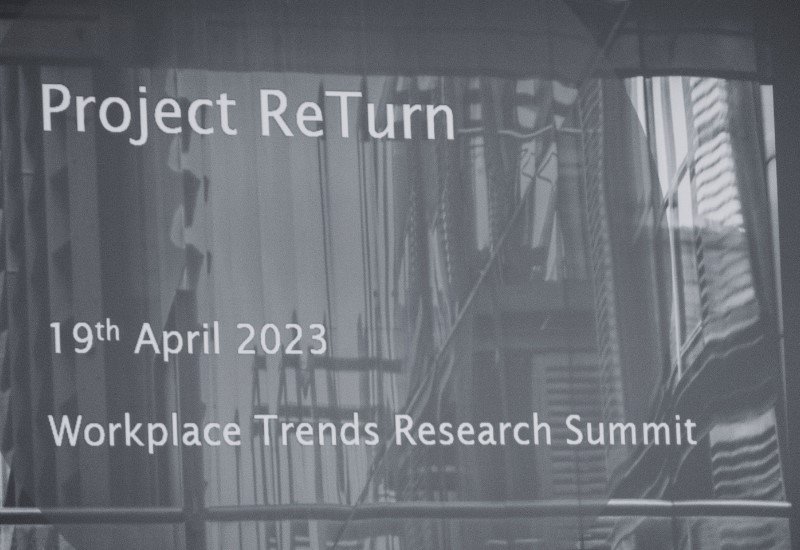We think AI will prove to be a game-changer in the real estate industry, providing invaluable insights and efficiencies across various aspects of the business. From investment analysis to property management, AI's data-driven approach is already empowering real estate professionals to make informed decisions and maximise their returns while optimising operational processes.
The real estate industry is undergoing a significant transformation due to the integration of advanced data analysis and artificial intelligence (AI). From investment analysis to property management, AI-driven technologies are revolutionising how professionals approach property management, asset management, building design and their strategies for business growth.
To give some insights into the capabilities of AI, I started by asking AI where it saw its use within the corporate world as a whole, and these can be categorised into four levels of automation. This is what ChatGPT came up with:
Assisted Intelligence (assisting with tasks, but authority lies with humans still):
Chatbots and virtual assistants (for customer queries and basic support)
Data analysis (automate data processing tasks, identifying patterns and generating insights for decision-making)
Recommender systems (Analysing user preference and behaviour to provide personalised recommendations for products/content/services)
Augmented intelligence (combines human expertise and AI capabilities):
Natural language processing (analyse large volumes of text and extract information, summarise documents to assist in research and legal document analysis)
Image/video analysis (help healthcare, manufacturing, and security by automatically detecting anomalies or other patterns in visual data)
Cybersecurity (aid response to potential security threats by analysing network traffic and user behaviour and finding anomalies)
Semi-autonomous intelligence (AI can make decisions but still requires human oversight):
Autonomous vehicles
Robotic Process Automation, RPA (AI-based bots automating routine and rule-based tasks, such as data entry, form filling, and invoice processing)
Supply chain management (optimising inventory, demand forecasting, logistics – providing recommendations for human operators)
Autonomous intelligence (AI can operate independently without human interaction):
Automated trading (making decisions based on market data and predictive analytics)
Industrial automation (manufacturing, quality control and assembly lines)
Autonomous drones (navigating, surveying, photographing, deliveries and infrastructure inspections)
This is a very good starting point, so where do we think AI and its various levels of automation can be integrated into the everyday activities of the real estate sector specifically?
What we are finding is that AI is a good place to start to get basic text and information about many subjects, this allows everyone to appear to be semi-competent in a range of topics, but this needs to be refined by the human writer to be of real use.
Let’s look at some of the case studies identified by the Remit Consulting team.
Investment Analysis:
AI-powered systems are now being used to analyse vast datasets of property market trends, economic indicators, and demographic data. By processing and interpreting this information, investors can gain a comprehensive view of potential opportunities and risks and help them to identify emerging trends and make data-driven decisions, reducing uncertainty and maximizing returns.
Risk Analysis:
With AI, risk analysis becomes more comprehensive and accurate. Factors such as property location, market conditions, and historical data on property performance can be analysed to assess potential risks. By identifying critical risk factors, investors can develop robust risk management strategies to protect their investments.
Property Valuation:
Automated Valuation Models (AVMs) utilise AI algorithms to determine property values accurately. Considering factors like location, property characteristics, market trends, and comparable sales, AVMs can provide reliable valuations. This not only aids in making informed purchase decisions but can, by suggesting competitive prices, also streamline the selling process.
Portfolio Optimisation:
AI can enable real estate investors to optimise portfolio diversification by considering risk tolerance, market conditions, and historical performance. Additionally, real-time monitoring of market trends, news, and social media sentiment could assist in identifying potential investment opportunities or risks.
Property Management:
a. Maintenance and Repair Scheduling:
By analysing property data and maintenance records against historical patterns, AI can be used to optimise maintenance schedules, predict failures, and minimise downtime. This proactive approach can improve property performance and reduces maintenance costs.
b. Energy Efficiency:
AI systems can be used to monitor energy usage patterns, identify areas for improvement, and suggest energy-saving measures. This helps reduce operational expenses and contributes to a more sustainable approach to property management.
c. Tenant Management:
Chatbots, powered by AI, can streamline tenant interactions, automating routine tasks such as reporting and scheduling maintenance issues and rent collection. This can help improve tenant satisfaction and free up property managers to focus on more complex issues, by assisting and training staff to provide a higher level of service.
Risk Management and Compliance:
AI is being used to assist fraud detection by analysing suspicious money traffic and other financial patterns. Additionally, it can ensure regulatory compliance in property transactions and management processes by monitoring regulatory changes and analysing legal documents.
Market Research and Demand Forecasting:
The analysis of property listings, demographic data, and consumer preferences by AI systems can help identify market trends, demand patterns, and potential investment opportunities. Additionally, AI models can predict demand based on population growth, employment trends, and socioeconomic indicators.
Embracing these transformative technologies will undoubtedly pave the way for a smarter, more resilient real estate market in the future. Should you wish to discuss the integration of AI into your business or learn more about our technology consultancy services, please visit: https://www.remitconsulting.com/technology or email elijah.lewis@remitconsulting.com





























